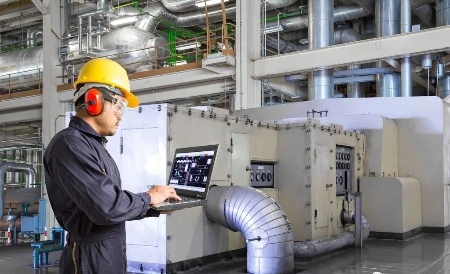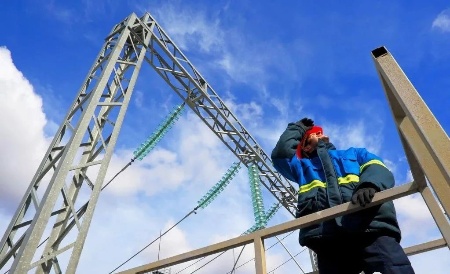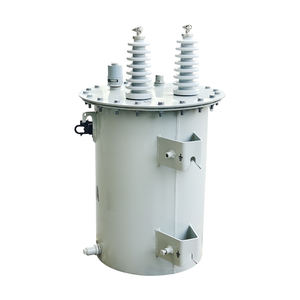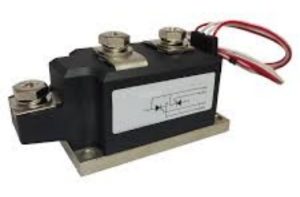Electronic Components Supplier | Transformers, Inductors, Inverters
In today’s era of smart manufacturing, a seemingly traditional role—the factory electrician—has become a major headache for many business owners. Job postings remain open indefinitely, wages are repeatedly increased, yet electricians are either impossible to find or leave after just a few days. The reasons behind this go far beyond money. This article delves into this chronic issue plaguing countless factories and explores genuine solutions.

Electrician Construction Site Map
1.1 Dilemma: “Ineffective retention” under the temptation of high salaries
Entering any large manufacturing factory, what often catches the eye are highly automated production lines, precision robotic arms, and complex control systems. The “lifeline” of these devices is maintained by electricity, and electricians are the “guardians” who ensure the smooth flow of this lifeline. However, this’ guardian deity ‘is becoming increasingly difficult to hire and keep.
Many bosses are confused: ‘I have already offered a salary higher than the market average, why can’t I keep people?’ The reality is that for modern electricians, salary is only a basic dimension they consider, and not even the most important dimension. After their basic survival needs are met, they begin to pursue a higher level of work value, respect, and personal growth. Simply increasing wages is like constantly adding water to a leaking bucket, without ever considering repairing the hole at the bottom of the bucket.
1.2 Reasons: Why do electricians frequently vote with their feet?
To solve a problem, one must first identify the root cause. The high turnover rate of factory electricians is the result of a combination of multiple factors.
1.2.1 The “Handyman” Dilemma: A Lack of Identity
In many factories, the electrician’s scope of duties is endlessly expanded. They are not only maintainers of electrical equipment but also often double as plumbers, movers, production line fill-ins, and even cleaners. The jest, “Jack of all trades, master of none,” captures their无奈 perfectly. This role misalignment severely undermines their professional identity, making them feel less like technical experts and more like general laborers.
1.2.2 High Pressure and Shift Work: A Vicious Cycle of Burnout
Factory equipment, especially older machinery, often fails unexpectedly and urgently. Electricians need to be on call 24/7 to handle various emergency repairs. Frequent night shifts and overtime disrupt normal circadian rhythms. Being woken from sleep to rush to the workshop is commonplace. This long-term irregular schedule and high-intensity mental pressure take a significant toll on physical and mental health.
1.2.3 The Skills Crisis: Fear of Falling Behind the Times
Modern industry is rapidly transforming towards automation and smart manufacturing. New technologies like PLCs, variable frequency drives, industrial robots, and sensor networks are emerging constantly. However, many factories still relegate their electricians to basic tasks like “replacing contactors and connecting wires,” without providing systematic skills training. Ambitious electricians who see their peers advancing while their own knowledge stagnates develop strong career anxiety, fearing obsolescence.
1.2.4 Lack of Respect and Voice
In the eyes of many management teams, electricians are seen as a cost center, not value creators. Their suggestions for equipment maintenance and upgrades are often ignored, only to be remembered when machinery grinds to a halt and production stops. This “ignore them until you need them” attitude makes electricians feel disrespected and strips them of their professional voice.
1.2.5 The Career Ceiling
Within traditional factory structures, the career path for an electrician is very narrow. The progression from junior to senior to technician is a single, often congested, ladder. For most electricians, seeing their future self in ten or twenty years as largely unchanged from today creates a sense of stagnation that drives away any talented individual with ambition.

Electrician outdoor construction site
1.3 Breaking the deadlock: strategic shift from “employment” to “retention”
Realizing the underlying causes of the problem, factory managers need to carry out systematic reforms at the strategic level to truly create a platform that can attract and retain excellent electricians.
1.3.1 Naming: Clarify responsibilities and reshape professional value
Firstly, it is necessary to develop clear and standardized job descriptions for the electrician position, freeing them from the identity of “miscellaneous workers”. Ensure that their work revolves around electrical maintenance, equipment upkeep, and technological upgrades. This is the first step in giving them professional respect.
1.3.2 Empowerment: Investing in ‘people’ and establishing a continuous training system
Consider training as the most important investment. Regularly organize internal training or external learning on new technologies such as PLC, industrial robots, automation systems, etc. Encourage and sponsor electricians to obtain higher-level vocational qualification certificates. This not only enhances their skills, but also sends a positive signal that the company is willing to grow together with its employees.
1.3.3 Authorization: Provide a sense of participation and decision-making power
Invite experienced electricians to participate in discussions involving equipment selection, modification, and preventive maintenance plans, and carefully listen to their professional opinions. Transform them from passive executors to active participants in planning and decision-making. This can greatly enhance their sense of ownership and value in their work.
1.3.4 Planning: Design diversified career development paths
Break the single career promotion ladder and design diversified growth channels for electricians. For example:
Technical expert path: Focus on solving the most complex technical problems and enjoy salaries and benefits equivalent to management.
Trainer Path: Responsible for cultivating new talents and inheriting technical experience.
Management path: Develop towards management positions such as equipment supervisor and engineering manager.
Let every electrician see a future that suits their own characteristics.
1.3.5 Optimization: Humanized work arrangement and incentive mechanism
By introducing a rotation system, optimizing scheduling, and establishing emergency response teams, the workload and emergency pressure of electricians can be minimized as much as possible. At the same time, establish a performance incentive mechanism linked to indicators such as equipment failure rate, downtime, and technological innovation contribution, so that their efforts are fairly rewarded.

On site construction operation pictures of electricians
1.4 Electricians are a Priceless Asset in the Smart Manufacturing Era
In the context of Industry 4.0 and initiatives like Made in China 2025, versatile electricians who are proficient in traditional electrical work and skilled in automation and smart technologies are among the most valuable assets for a company’s transformation and upgrading. They are no longer mere “repairmen” but “industrial doctors” and “technical engines” who ensure production stability and drive technology implementation.
For factories to retain electricians, they can no longer rely solely on simple salary levers. It requires a fundamental shift in mindset from management and a comprehensive reform encompassing culture, management, and incentive systems. Only by creating a work environment that respects expertise, encourages growth, and shares value can the “retention difficulty” be fundamentally solved, allowing these crucial “Guardians of the Grid” to settle in and power the company’s long-term development.







